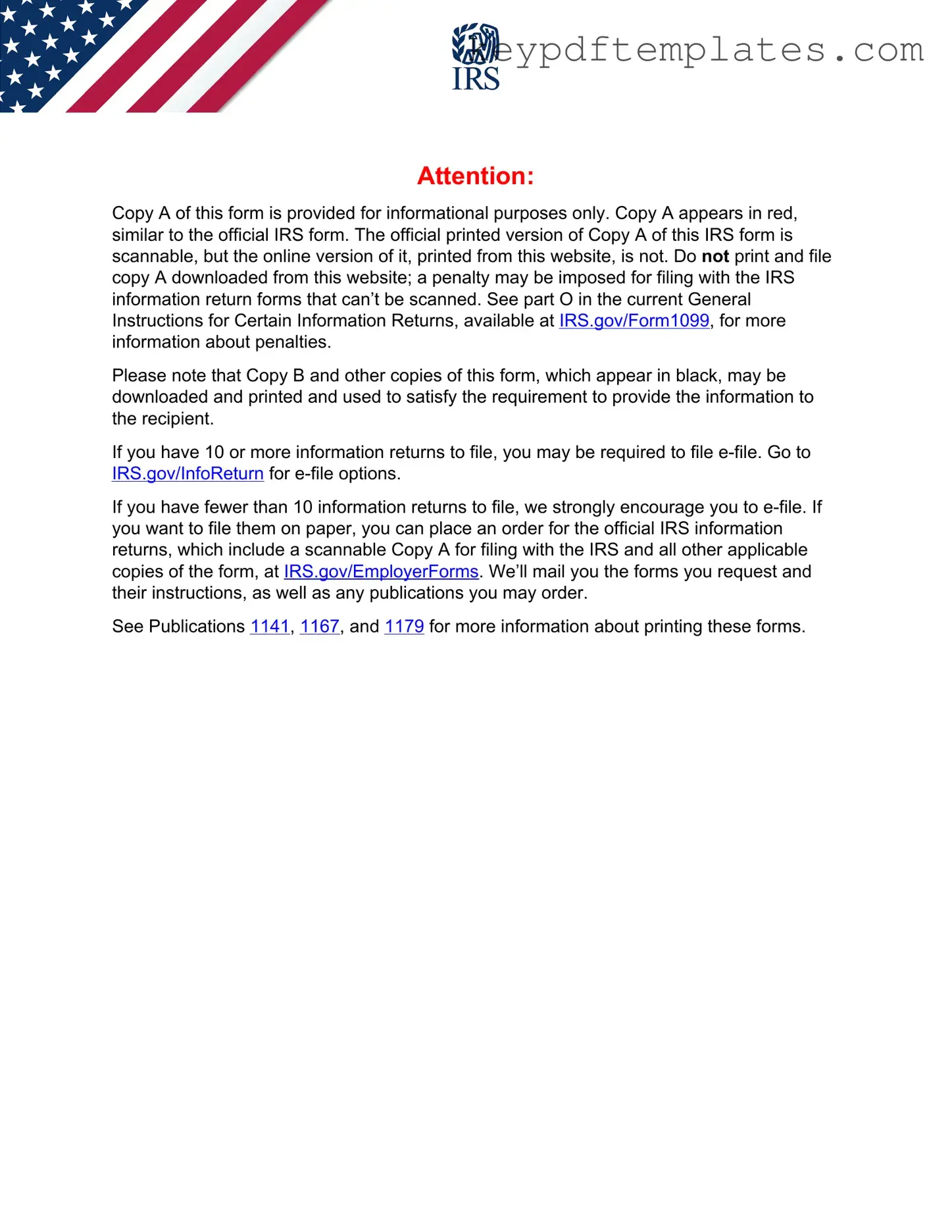Get IRS 1099-MISC Form
The IRS 1099-MISC form is a tax document used to report various types of income received by individuals and businesses that are not classified as wages. This form serves as a crucial tool for ensuring that all income is accurately reported to the Internal Revenue Service. Understanding its purpose and requirements can help taxpayers avoid potential pitfalls during tax season.
Modify Document Online
